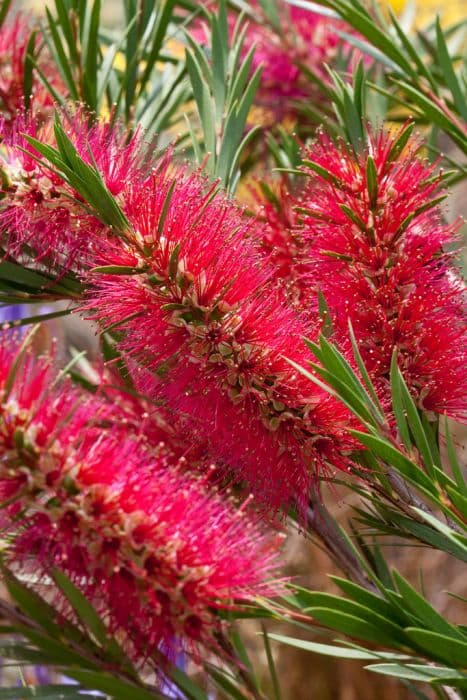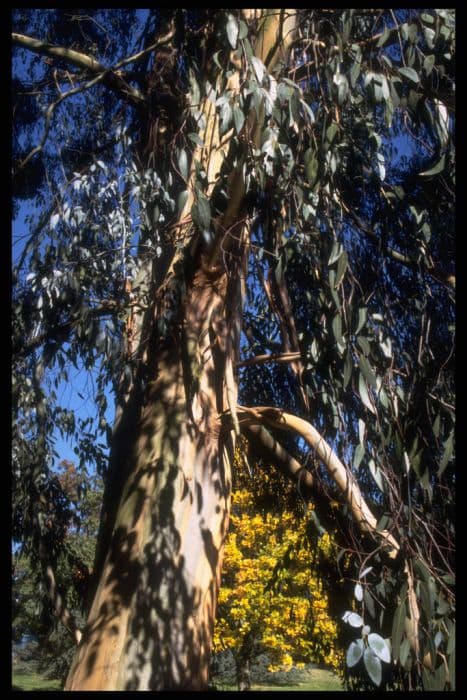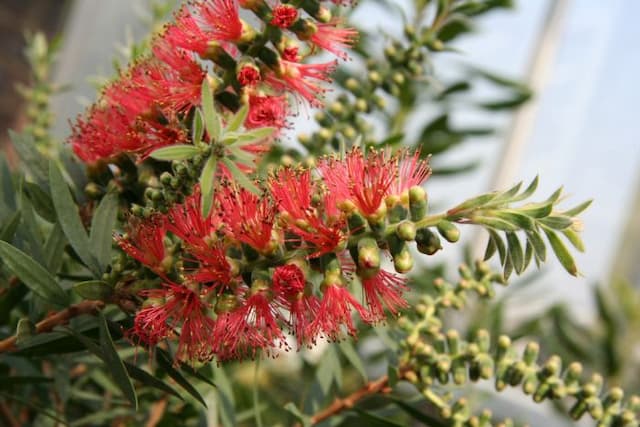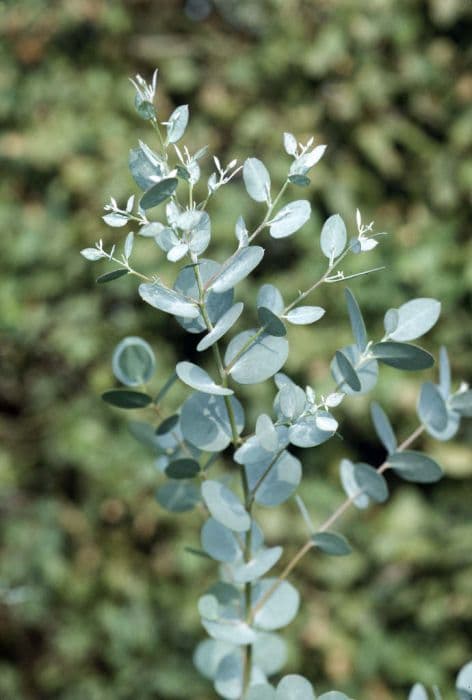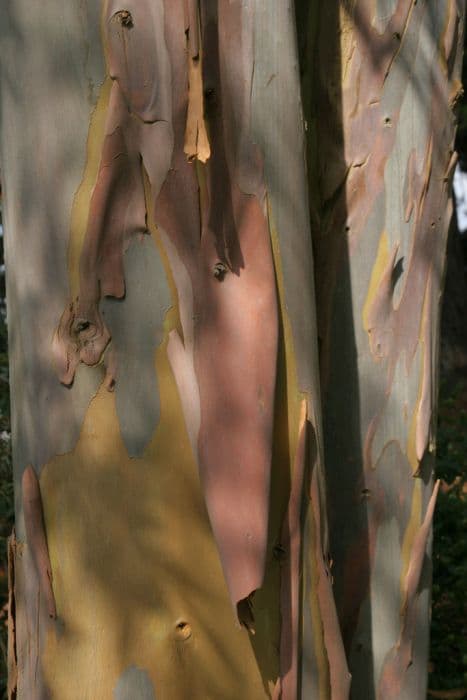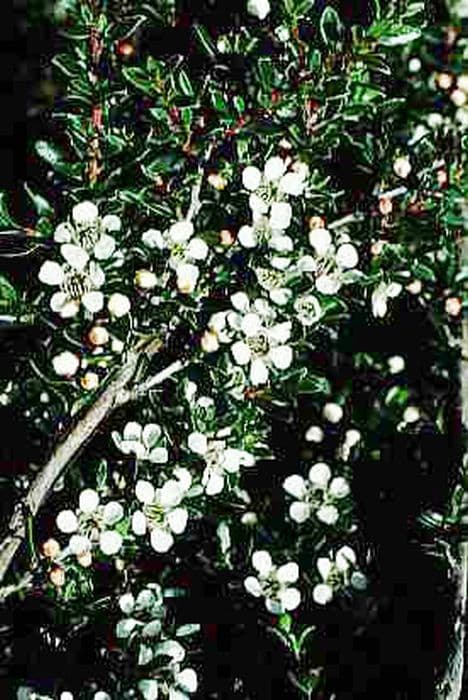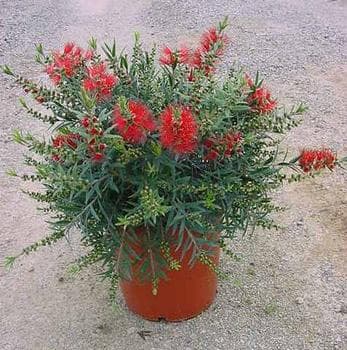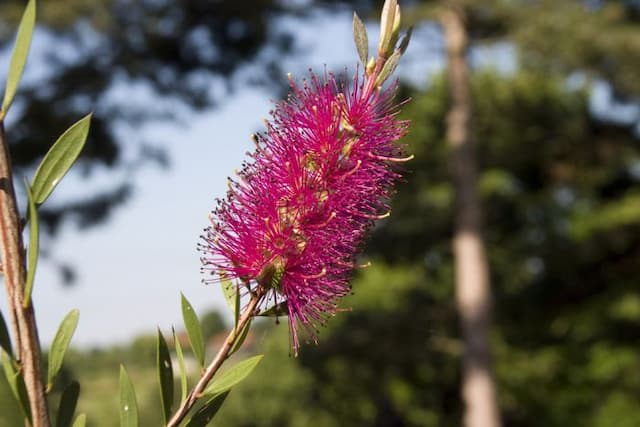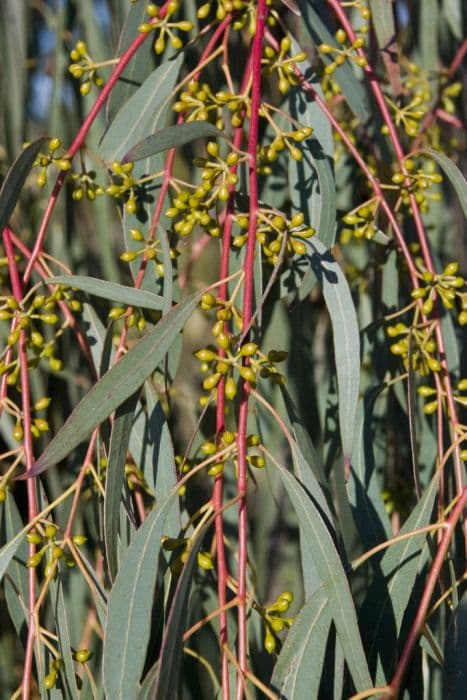Mountain Tea Tree Leptospermum grandiflorum

ABOUT
Leptospermum grandiflorum, commonly known as the large-flowered tea tree, is a striking plant recognized for its distinctive features. It boasts an abundant display of white or sometimes pink flowers. These blossoms are particularly notable for their large size compared to other species within the same genus, and they display a profusion of delicate petals that create an alluring aesthetic. At the center of each bloom, a cluster of small, dark seed capsules can typically be observed following the flowering period. The leaves of the large-flowered tea tree are equally attractive, characterized by their slender shape and a slightly pointy tip. They grow densely along the stems, creating a bushy appearance, with a dark green hue that provides a lush backdrop to the luminous flowers. This rich green foliage often emits a pleasant aroma when crushed, which adds another sensory dimension to the plant's appeal. As a whole, the large-flowered tea tree presents a rounded and compact form, with a symmetry that contributes to its ornamental value. This well-defined shape, combined with its vibrant blooms and aromatic foliage, makes it a popular choice for gardens and landscapes where it is used to create visual interest and appeal.
About this plant
 Names
NamesFamily
Myrtaceae.
Synonyms
Mountain Tea Tree, Large-flowered Tea Tree, Grand Tea Tree.
Common names
Leptospermum grandiflorum.
 Toxicity
ToxicityTo humans
Leptospermum grandiflorum, commonly known as the large-flowered tea tree, is not widely recognized for having significant toxicity to humans. There is little documented evidence to suggest that the plant poses serious health risks when touched or ingested. However, as with many plants, individual allergic reactions can occur, and eating non-edible plants is generally discouraged due to the potential for gastrointestinal discomfort or other mild reactions.
To pets
The large-flowered tea tree, known scientifically as Leptospermum grandiflorum, does not have a well-documented profile of toxicity to pets such as dogs and cats. There are no major toxins known to be present in this plant that would cause severe poisoning symptoms. Nevertheless, it's typically advisable to prevent pets from consuming plants as they can sometimes cause vomiting, diarrhea, or other digestive issues, particularly in animals with sensitive stomachs or those that are not accustomed to ingesting plant material.
 Characteristics
CharacteristicsLife cycle
Perennials
Foliage type
Evergreen
Color of leaves
Varies
Flower color
White
Height
4-10 feet (1.2-3 meters)
Spread
4-10 feet (1.2-3 meters)
Plant type
Shrub
Hardiness zones
9
Native area
Australia
Benefits
 General Benefits
General Benefits- Landscape Aesthetics: Leptospermum grandiflorum, commonly known as 'Large-flowered Tea Tree', adds visual appeal to gardens with its vibrant, large flowers and evergreen foliage.
- Habitat for Wildlife: It provides food and shelter for pollinators like bees, as well as birds and other beneficial garden insects.
- Erosion Control: The robust root system can help stabilize soil and prevent erosion on slopes or in areas susceptible to heavy rains.
- Drought Tolerance: Once established, it is quite drought-tolerant, making it a good choice for water-wise gardening and xeriscaping in suitable climates.
- Privacy Screen: Its dense foliage makes it well-suited for creating natural privacy screens and hedges.
- Low Maintenance: It generally requires minimal upkeep, with less frequent need for watering, fertilizing, or pruning compared to some other garden plants.
- Windbreak: The sturdy nature of the plant can serve as a windbreak, protecting more delicate plants and reducing wind erosion.
 Medical Properties
Medical PropertiesThis plant is not used for medical purposes.
 Air-purifying Qualities
Air-purifying QualitiesThis plant is not specifically known for air purifying qualities.
 Other Uses
Other Uses- As a Flavoring Agent: The leaves of the Leptospermum grandiflorum, commonly known as giant tea tree, can be used to impart a distinct flavor to culinary dishes or beverages similar to other herbal infusions.
- In Aromatherapy: Oil extracted from the giant tea tree can be used in aromatherapy for its calming and pleasant scent, though this is not connected to any medical benefits.
- As a Natural Dye: The flowers and leaves can be used to produce natural dyes for fabrics or crafting, contributing subtle earth-toned colors.
- In Wood Crafting: The wood of the giant tea tree is hard and can be used for making small wooden objects such as handles, ornaments, or tools.
- Garden Sculpting: Due to its attractive form, the giant tea tree can be shaped and used in topiary, creating living garden sculptures.
- For Privacy Screens: The dense foliage of the giant tea tree makes it suitable for planting as a natural privacy screen or hedge in landscaping.
- Beekeeping Attraction: Its flowers are a good source of nectar and can attract bees, making it a beneficial plant for beekeepers to encourage pollination.
- As a Soil Stabilizer: Giant tea tree's root system can be used to control soil erosion in areas prone to landslides or heavy run-off.
- As a Natural Fertilizer: When decomposed, the leaves and branches can enrich the soil as a natural fertilizer, enhancing the nutrient content.
- In Educational Settings: This plant can be used for botanical studies or horticultural training due to its unique characteristics and adaptive growth habits.
Interesting Facts
 Feng Shui
Feng ShuiThe Leptospermum grandiflorum, commonly known as 'Large-flowered Tea Tree', is not used in Feng Shui practice.
 Zodiac Sign Compitability
Zodiac Sign CompitabilityThe Leptospermum grandiflorum, commonly known as 'Large-flowered Tea Tree', is not used in astrology practice.
 Plant Symbolism
Plant Symbolism- Endurance: Leptospermum grandiflorum, commonly known as large-flowered tea tree, is often associated with resilience and the ability to survive in challenging environments, reflecting the plant's own robust nature.
- Purity: The delicate white flowers of the large-flowered tea tree symbolize purity and innocence, echoing their clean, simple appearance.
- Healing: Due to its medicinal properties, the large-flowered tea tree signifies healing and the restoration of health.
- Protection: In some cultures, the large-flowered tea tree is believed to offer protection against negative energies and to bring peace to one's home.
 Water
WaterLarge Tea Tree, or Leptospermum grandiflorum, should be watered regularly to maintain moist but not waterlogged soil; excessive dryness can be detrimental. Water when the top inch of soil feels dry, approximately once a week, but adjust frequency based on temperature and humidity. In general, provide about 1 to 1.5 gallons per watering session for an average-sized shrub, ensuring even distribution throughout the root zone. During the hotter, drier months, water frequency might increase, while in the cooler months, it may decrease. Always ensure good drainage to prevent root rot.
 Light
LightThe Large Tea Tree thrives in full sunlight, where it can receive at least six to eight hours of direct light daily. The best spot for this plant is in an open area where it's exposed to unfiltered sunlight for most of the day. However, in extremely hot climates, providing some afternoon shade can help prevent scorching.
 Temperature
TemperatureLarge Tea Trees do best in mild to warm temperatures, ideally between 50°F and 75°F. They can tolerate temps down to about 20°F for short periods, but prolonged exposure to freezing temperatures can be harmful. On the warmer side, they can handle up to about 86°F as a maximum but perform optimally within the cooler range of their tolerance.
 Pruning
PruningPrune the Large Tea Tree to shape and maintain its health, ideally during late winter or early spring before the onset of new growth. Pruning can also stimulate flowering and should be done annually to remove any dead, damaged, or diseased branches and to control the plant's size.
 Cleaning
CleaningAs needed
 Soil
SoilThe large-flowered tea tree (Leptospermum grandiflorum) thrives best in well-draining, sandy to loamy soil with a slightly acidic to neutral pH between 5.5 to 7. A good soil mix can be created using equal parts of sand, peat, and loamy garden soil, ensuring adequate drainage for root health.
 Repotting
RepottingLarge-flowered tea trees should generally be repotted every 2-3 years to prevent root-bound conditions and replenish nutrients in the soil. Best repotted in the spring, they can also be situated into slightly larger pots each time to accommodate growth.
 Humidity & Misting
Humidity & MistingLarge-flowered tea trees prefer moderate to high humidity levels, but they adapt well to less humid environments typical of indoor conditions as long as there's good air circulation and the soil moisture is maintained appropriately.
 Suitable locations
Suitable locationsIndoor
Ensure bright, indirect light and well-draining soil.
Outdoor
Plant in sunny spot, shield from harsh winds, well-draining.
Hardiness zone
8-11 USDA
 Life cycle
Life cycleLeptospermum grandiflorum, commonly known as large-flowered tea tree, begins its life cycle as a seed, which after dispersal germinates in suitable conditions of soil moisture and temperature. The seedling stage follows, characterized by the emergence of the first set of true leaves, and the plant begins to establish a root system. As it enters the vegetative stage, the large-flowered tea tree develops more leaves and branches, creating a woody stem structure and increasing in size. The mature plant reaches the reproductive stage, where it produces distinctive, large white or pink flowers that attract pollinators for sexual reproduction. Following pollination and fertilization, the flowers develop into woody capsules containing numerous small seeds. These seeds are eventually released to complete the cycle when the parent plant dies or during favorable conditions, allowing for new individuals to begin the life cycle again.
 Propogation
PropogationPropogation time
Spring to Early Summer
The most popular method of propagation for the New Zealand Tea Tree, or Leptospermum grandiflorum, is through cuttings. This is usually carried out in the late spring or early summer when the plant is in active growth. To propagate by cuttings, select semi-hardwood stem tips that are about 4 to 6 inches long. Strip the bottom leaves off and dip the cut end into a rooting hormone powder to encourage root growth. Next, plant the cutting into a pot filled with a moistened mix of half peat and half perlite, ensuring that the leafless portion of the stem is buried. The pot should then be placed in a warm, brightly lit area but out of direct sunlight until roots develop, which can take several weeks. During this time, it's crucial to maintain a humid atmosphere around the cutting, which can be achieved by covering the pot with a plastic bag or placing it inside a propagator.

